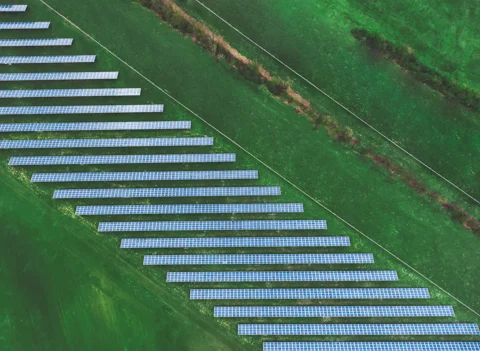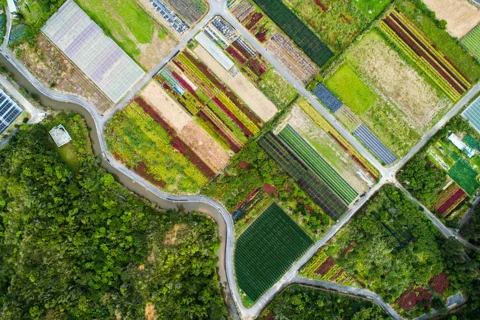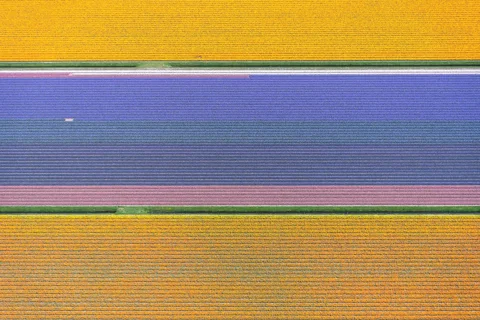The investment world has many familiar and less familiar terms, like stocks, bonds, options and swaps. In the Investments Explained series, we explain the various asset categories. In this episode, Peter Verbaken, Head of Commodities at APG Asset Management, discusses commodities - also known as commodity futures, which belong to the so-called derivatives.
What is it?
With a commodity - or raw materials - futures contract, an investor enters into an agreement to buy (long) or sell (short) a certain amount of raw material at a set price on a set date. The futures are freely tradable on various stock exchanges.
When did it originate?
As early as the eighteenth century, Asian farmers were making price agreements with traders for future supplies of rice. In the nineteenth century, Chicago became the center for U.S. trade in grain futures contracts. Later, commodity futures trading was further expanded.
What else is involved?
Investing in commodities means diversification of an investment portfolio and decent inflation protection.
What is it?
Commodity futures is a derivative, a derived product, based on the price of the underlying commodity. Many different types of commodity futures are traded on exchanges worldwide, roughly divided into metals, energy and agricultural products. Most well-known are the trades in gold, oil and grains.
“In a futures contract, buyer and seller make binding agreements through a commodity exchange about the price of the commodity on a certain day in the future,” explains Peter Verbaken, 15 years with APG as an investment specialist. “So, the price of a contract is based on the value of the underlying commodity, for example gold. You could say that a buyer is counting on an increase in the value of that gold, while the seller expects a price decrease. A form of speculation indeed, especially since the value of commodities can fluctuate wildly. Think of crop failures, geopolitical developments or sudden scarcity. Volatility is high, but the risks for a long-term investor with a diversified investment portfolio need not be. In fact, one of the major advantages of investing in commodities is that it offers good diversification compared to other investments, such as stocks and bonds. Investments in commodities provide returns at a different time in the economic cycle than stocks or bonds. That is why adding commodities to an investment portfolio over the longer term actually leads to less risk for the investor.”
How do you finance your futures?
Peter Verbaken: “You enter into a commodity futures contract at a commodity exchange. This exchange requires the investor to deposit a margin worth usually around five percent of the underlying value of the commodity. So futures can be financed with only a limited amount of money compared to the value of the contract. The well-known leverage effect. By the way, we do not use that leverage as investors for pension funds. The full value of the commodity futures contracts in our investment portfolio is available in cash, so no leverage is used.”
Suppose you entered into a futures contract for two tons of wheat. What happens on the agreed delivery date? Will the wheat be physically delivered that day? “No, for us, as a commodity investor, the intention is not to have the physical commodity actually delivered. Therefore, before the set delivery date, we close the old futures contract and open a new futures contract for the same commodity, but with a longer maturity. We call this ‘rolling over’ the futures position. Another option is to terminate the contract and take profits or losses.”
When did it originate?
As early as the sixteenth century, farmers made price agreements with traders about their future harvests. In this way they wanted to hedge their risks and be sure that they would receive a certain price for their products. With those guarantees, they could invest in the farm equipment they needed. The first commodity futures exchange emerged in the eighteenth century in Osaka, Japan, where rice futures were traded. In 1865, the Chicago Board of Trade was established in Chicago, an exchange with the first standardized futures on wheat and other agricultural products. Today, most commodity futures are traded electronically on stock exchanges worldwide, including in London, New York and Chicago.
What else is involved?
Commodity futures as an investment became increasingly important at the beginning of this century. APG also invests in commodity contracts for some of its clients. “Because commodities offer good diversification to a portfolio,” says Peter Verbaken. “In addition, commodities protect the investment portfolio from inflation to some extent. In times of high inflation, such as in recent years, commodities have historically been the best-performing asset class. They thus provide a counterweight to stocks and bonds, which often lose value when inflation is high.
Looking ahead, we expect commodities to play an important role in the energy transition, which will greatly drive demand for metals in particular. The production of batteries and wind turbines and the infrastructure needed for the energy transition will require a lot of metal, such as copper and aluminum, as well as lithium and cobalt. If this surge in demand cannot be sustained by supply, higher prices can be expected.”



